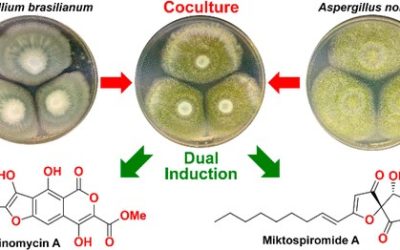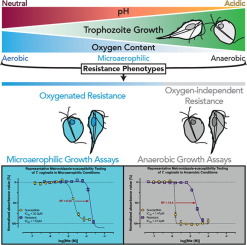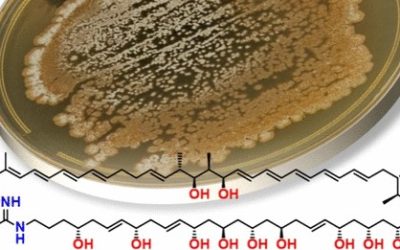Zoltan Dekan, Setareh Sianati, Arsalan Yousuf, Katy J. Sutcliffe, Alexander Gillis, Christophe Mallet, Paramjit Singh, Aihua H. Jin, Anna M. Wang, Sarasa A. Mohammadi, Michael Stewart, Ranjala Ratnayake, Frank Fontaine, Ernest Lacey, Andrew M. Piggott, Yan P. Du, Meritxell Canals, Richard B. Sessions, Eamonn Kelly, Robert J. Capon, Paul F. Alewood, and MacDonald J. Christie
Proceedings of the National Academy of Sciences 2019, 116, 22353-22358
Publication Date: October 14, 2019
https://doi.org/10.1073/pnas.1908662116
Abstract:
Agonists of the μ-opioid receptor (MOPr) are currently the gold standard for pain treatment. However, their therapeutic usage is greatly limited by side effects including respiratory depression, constipation, tolerance, and dependence. Functionally selective MOPr agonists that mediate their effects preferentially through G proteins rather than β-arrestin signaling are believed to produce fewer side effects. Here, we present the discovery of 3 unusual tetrapeptides with a unique stereochemical arrangement of hydrophobic amino acids from an Australian estuarine isolate of Penicillium species. Building on these natural templates we developed bilorphin, a potent and selective highly G protein-biased agonist of the MOPr. Further, through the addition of a simple sugar moiety, we generated bilactorphin that is an effective analgesic in vivo.
An Australian estuarine isolate of Penicillium sp. MST-MF667 yielded 3 tetrapeptides named the bilaids with an unusual alternating LDLD chirality. Given their resemblance to known short peptide opioid agonists, we elucidated that they were weak (Ki low micromolar) μ-opioid agonists, which led to the design of bilorphin, a potent and selective μ-opioid receptor (MOPr) agonist (Ki 1.1 nM). In sharp contrast to all-natural product opioid peptides that efficaciously recruit β-arrestin, bilorphin is G protein biased, weakly phosphorylating the MOPr and marginally recruiting β-arrestin, with no receptor internalization. Importantly, bilorphin exhibits a similar G protein bias to oliceridine, a small nonpeptide with improved overdose safety. Molecular dynamics simulations of bilorphin and the strongly arrestin-biased endomorphin-2 with the MOPr indicate distinct receptor interactions and receptor conformations that could underlie their large differences in bias. Whereas bilorphin is systemically inactive, a glycosylated analog, bilactorphin, is orally active with similar in vivo potency to morphine. Bilorphin is both a unique molecular tool that enhances understanding of MOPr biased signaling and a promising lead in the development of next generation analgesics.


